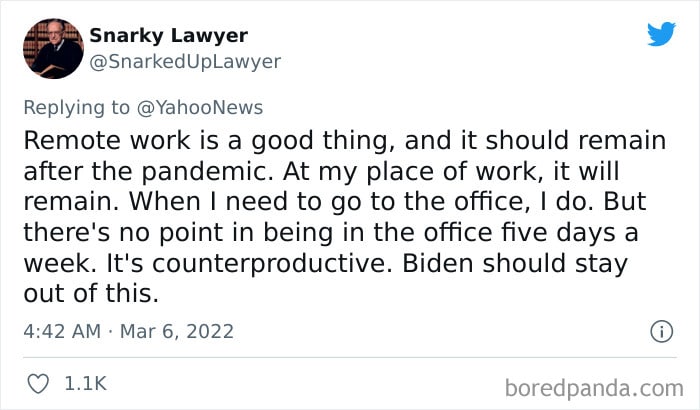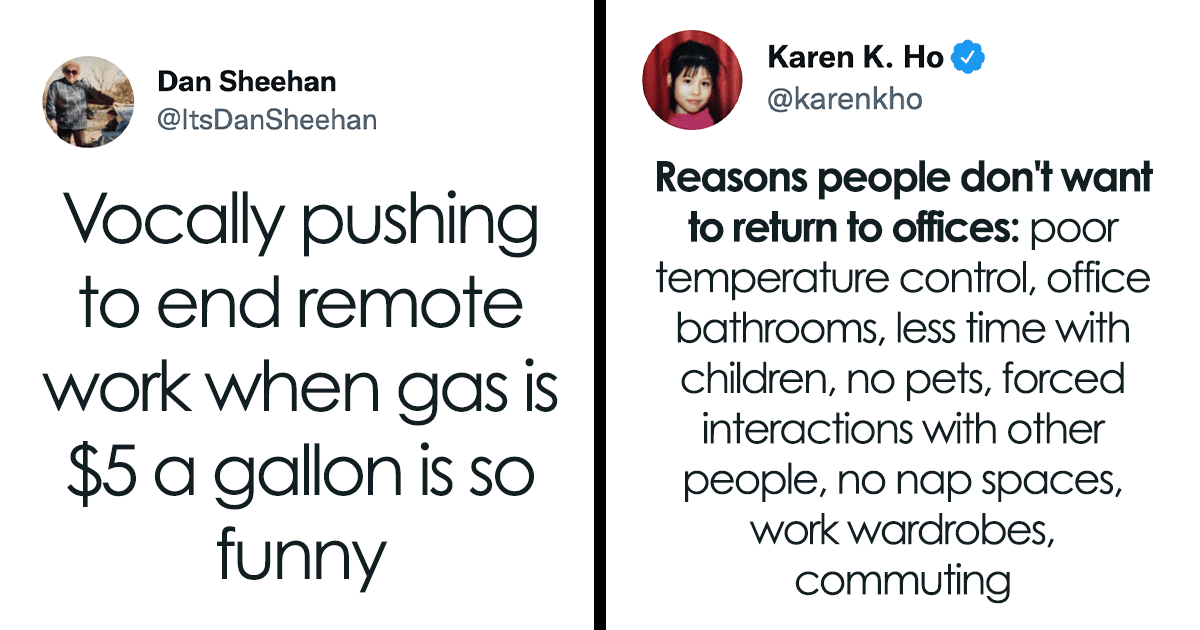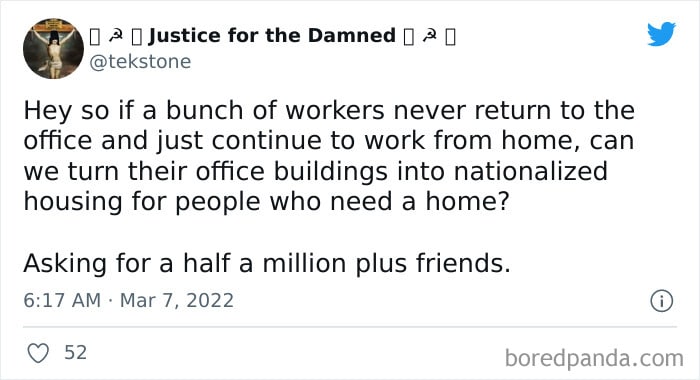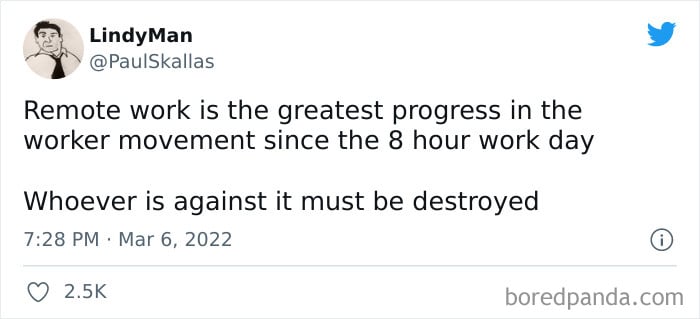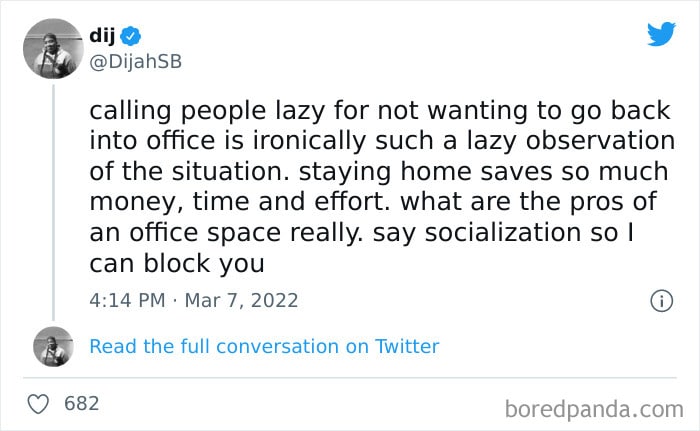When COVID-19 forced companies all over the world to send their employees home to work virtually, remote work had a big moment.
Yes, the rush to give employees access to all the tools they’d need to work from home was a bit, well, sudden for many employers. But after everyone settled in, what quickly became apparent to many office-based teams is that employees could be productive and focused when not in the office—in many cases, even more so. Employers everywhere began to understand that remote work really works.
But now President Joe Biden used part of his State of the Union address to urge employees to go back to offices, saying it was time to “fill our great downtowns again.” “fill our great downtowns again.”
“We can end the shutdown of schools and businesses,” the president claimed. “We have the tools we need.”
However, people aren’t feeling too psyched about it. With so many having successfully proved they can perform their tasks just as well (if not better) working remotely and gas prices continuing to rise due to Russia’s invasion of Ukraine, it’s no wonder some don’t like the decision.
To better understand the reasons why we took a look at social media where users have been voicing their complaints.
#1

#2

Gallup’s State of the Workforce study conducted in May/June with more than 9,000 American workers found that 91% of workers in the U.S. working at least some of their hours remotely were hoping their ability to work at home would persist after the pandemic.
Hybrid work was most preferred. Overall, 54% of respondents said they would ideally like to split their time between working at home and in the office. A little over a third (37%) would like to work from home exclusively, while just 9% wanted to return to the office full time.
#3
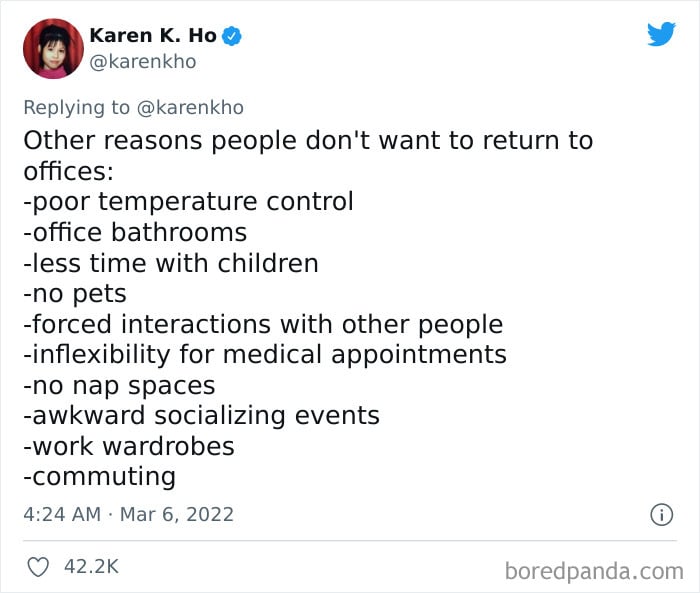
#4
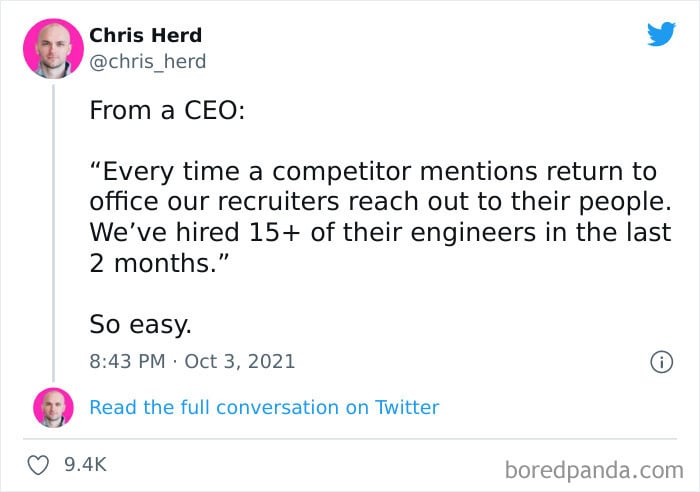
Time preservation was the key reason for wanting to work remotely:
Not having to commute, needing the flexibility to balance work and personal obligations, and improved wellbeing (which likely results from having more time) were the top-cited reasons for preferring remote work.
3 in 10 employees working remotely said they are extremely likely to seek another job if their company eliminates remote work.
#5
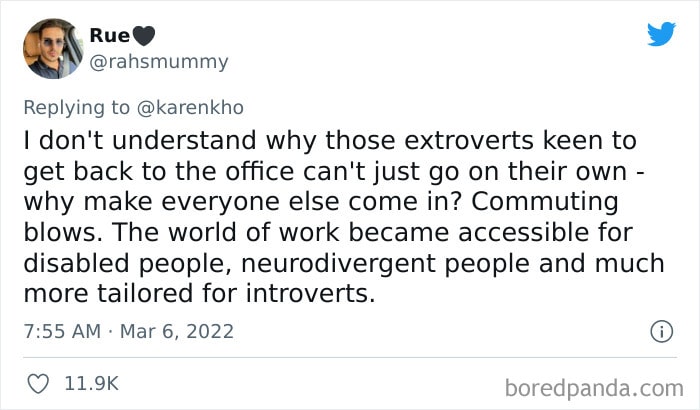
#6

#7
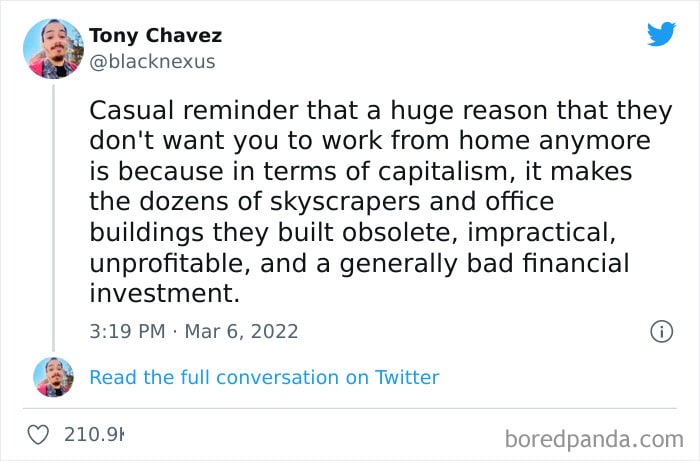
While most workers didn’t think remote work will improve their office culture, they didn’t think it will hurt it either. Two-thirds of all full-time U.S. employees thought that having people work remotely long term will have either no effect or a positive effect on their workplace culture; the remaining third thought it will be negative.
“The data runs counter to the idea that always being in the office is the best way to foster culture,” Brian Elliott, the Future Forum’s executive leader and Slack senior vice president, said. “Using digital tools is really important to building a culture for people who aren’t the average white male executive. Companies that invest in modern tools and in rethinking how they bring people together will do better than those insisting on full-time office work.”
#8
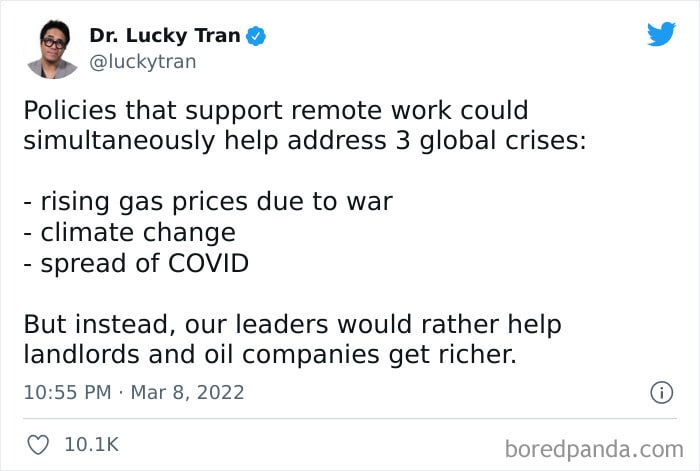
#9
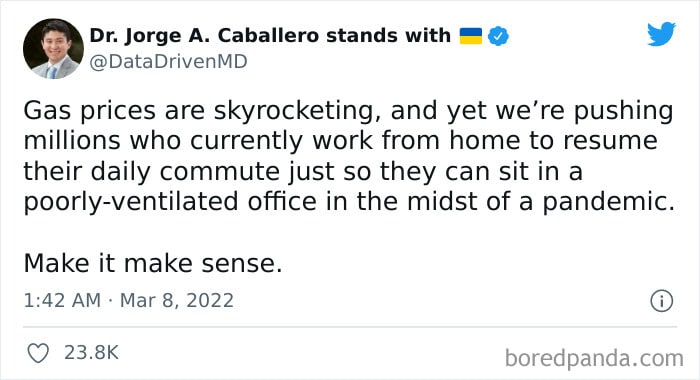
#10
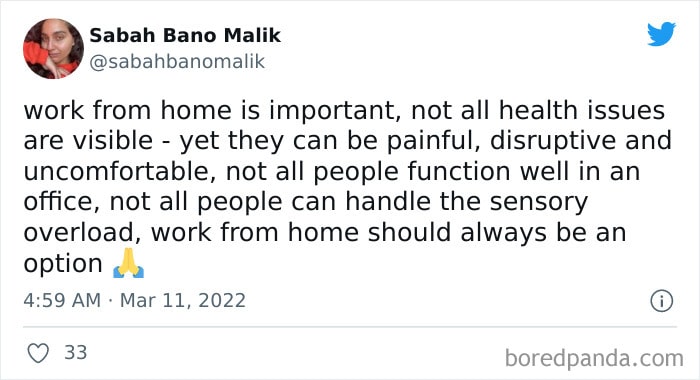
The Future Forum, developed by workplace-messaging platform Slack, surveyed more than 10,000 workers globally in the summer of 2021 and found an “executive-employee disconnect” with regard to returning to work. Three-quarters of all executives reported they want to work from the office three to five days a week, compared with about one-third of employees. Among executives who have primarily worked completely remotely through the pandemic, 44% said they wanted to come back to the office every day. Just 17% of employees said the same.
Most executives (66%) also reported they were designing post-pandemic workforce policies with little to no direct input from employees.
#11
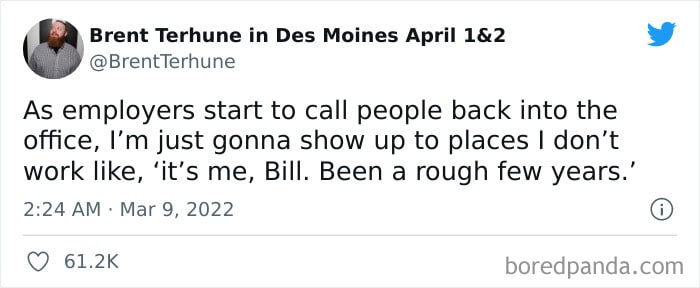
#12

#13
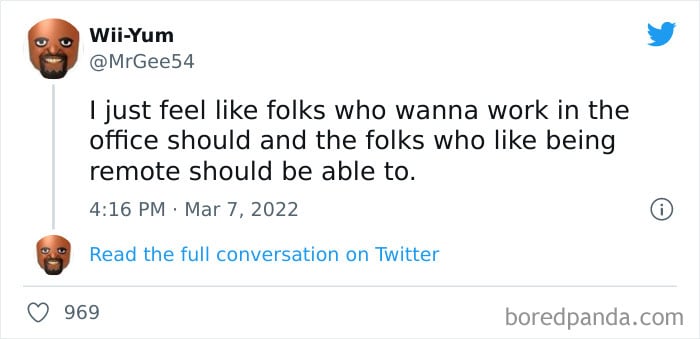
Bringing people back to the office for chance meetings in an elevator or by the water cooler, according to Elliott, is “mythology.”
Still, it’s possible those interactions are much more valuable to an executive than to an employee — further leading to the disconnect, said Amy Zimmerman, chief people officer at Relay Payments, which has worked with founders and executives to develop and nurture culture.
#14

#15
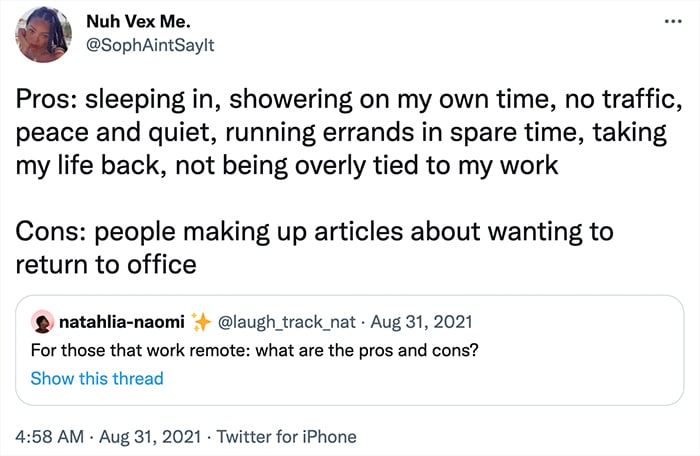
#16
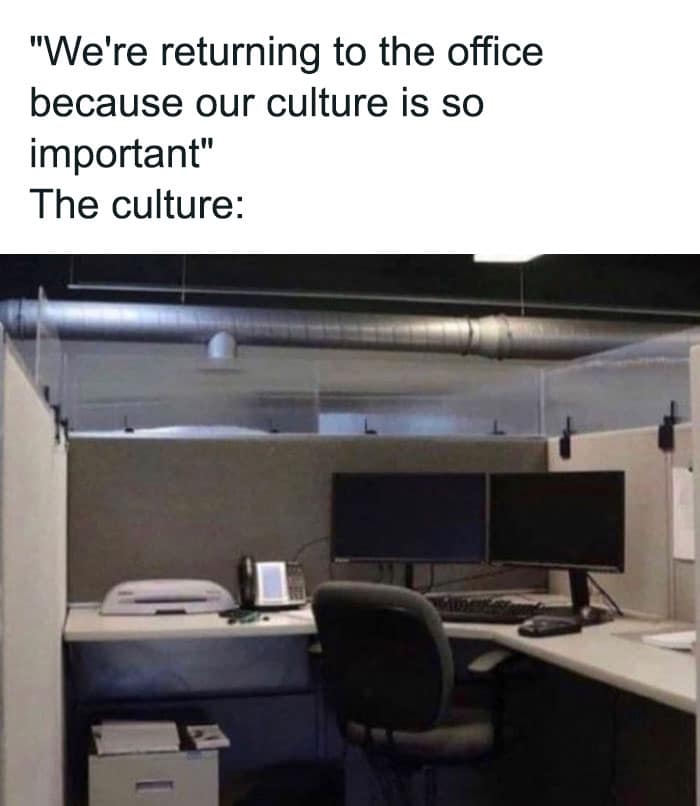
Zimmerman highlighted that older executives rely on face-to-face communication to get a better sense of what’s going on throughout their organizations; they also may have more need for those chance conversations to keep tabs on a large number of employees.
“I’ve worked with a CEO who told me he just liked the energy of the office,” Zimmerman recalled. “There was something about seeing the cars in the parking lot that brought him joy. The fact is, corporate America is likely changed forever. You’re making a huge mistake if you’re requiring folks back in office full time, because they see the progress most companies have made in the last two years, and they’ll ask, ‘why?’ It feels like micromanagement.”
#17
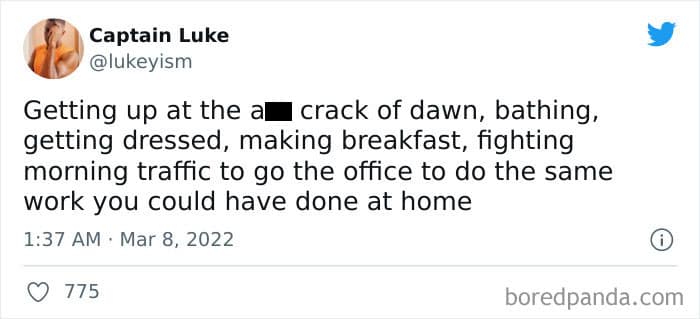
#18

#19
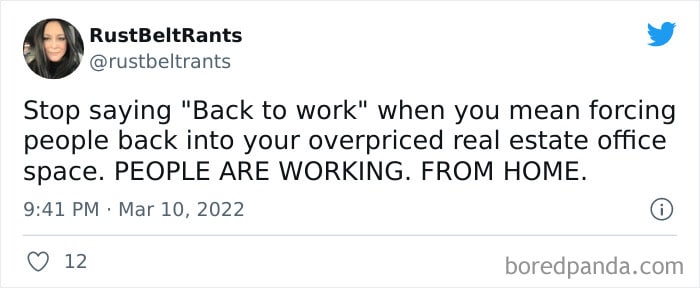
#20
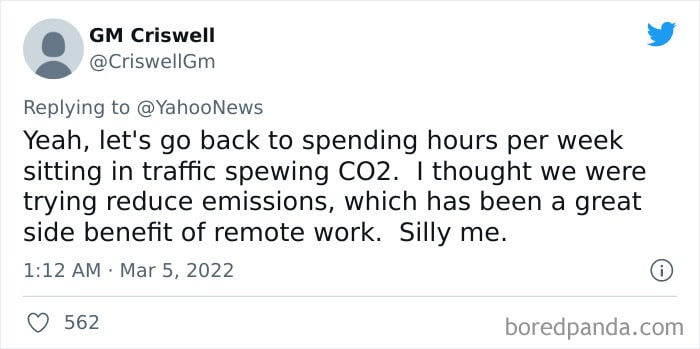
Over 90% of employers are planning to adopt a hybrid model this year, according to recent research from tech consulting firm Gartner – but researchers expect several high-profile companies to “change course” in the months ahead and demand that employees return to the office full-time, citing high turnover rates and a perceived loss of organizational culture.
#21
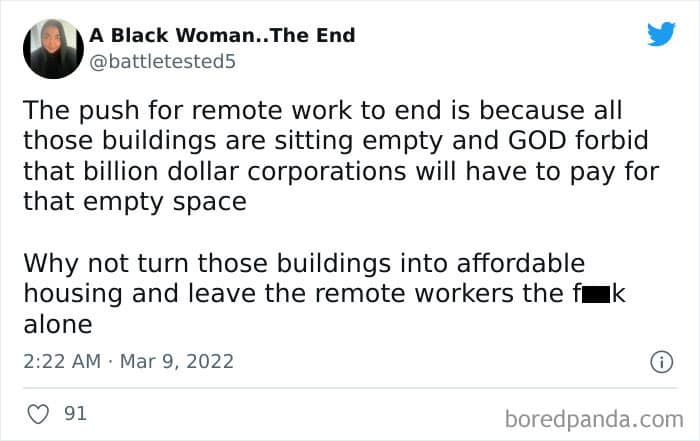
#22
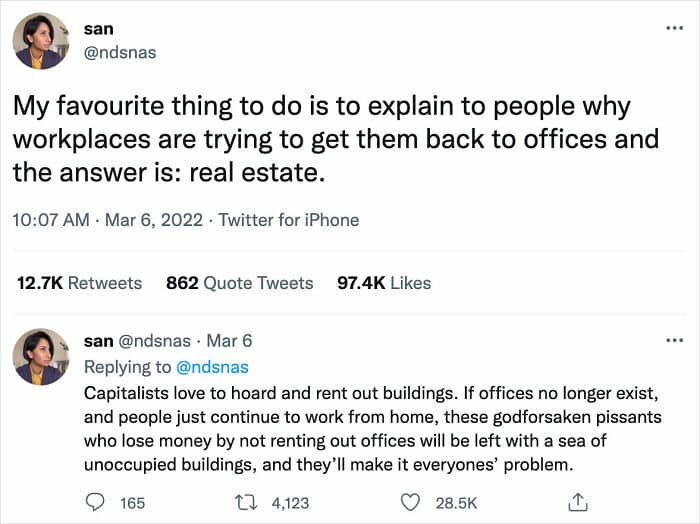
#23
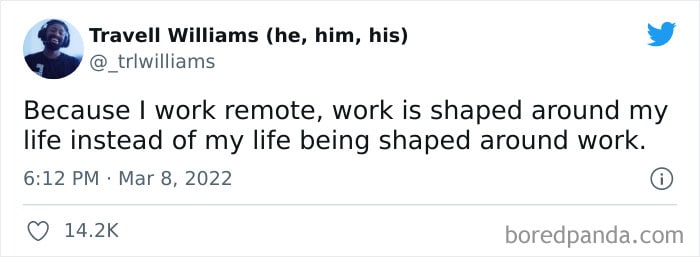
#24
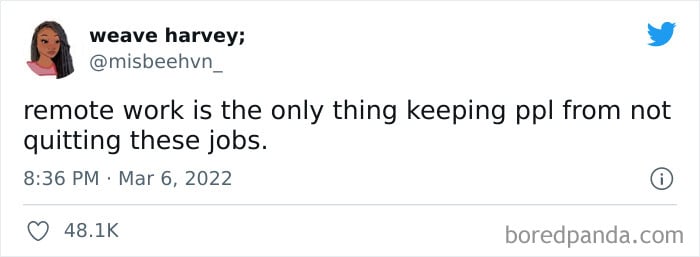
“We’ve been learning to work remotely either part or all of the time on the fly during this crisis,” Peter Cappelli, a professor at the University of Pennsylvania’s Wharton School of Business, said. “There’s a lot of moving parts that are difficult to manage, too, without being able to predict with full confidence what the consequences will be: What if employees don’t agree on what days to come in, or how do you equally measure the performance of people who are remote vs. in the office, avoiding proximity bias?”
#25
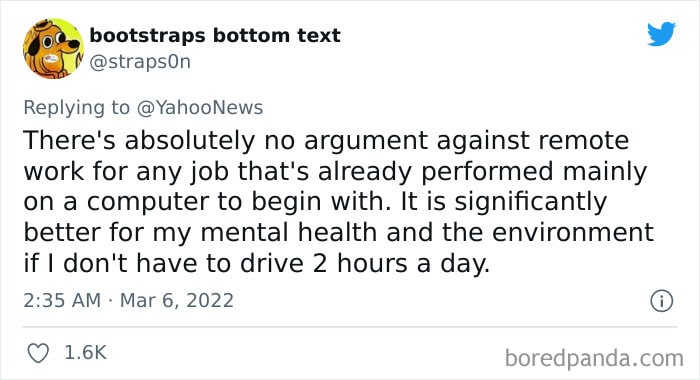
#26
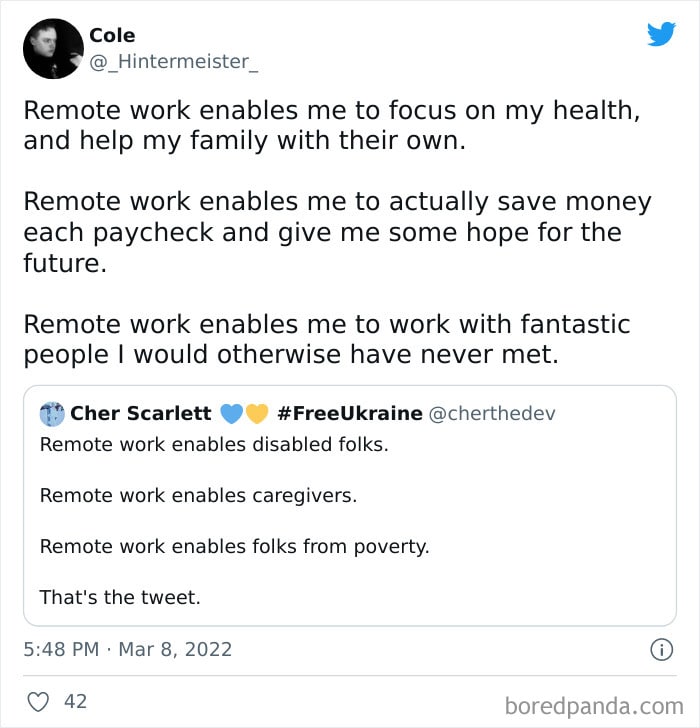
#27
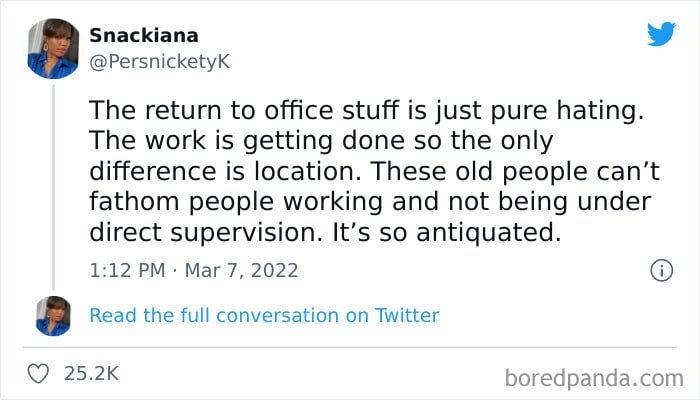
#28
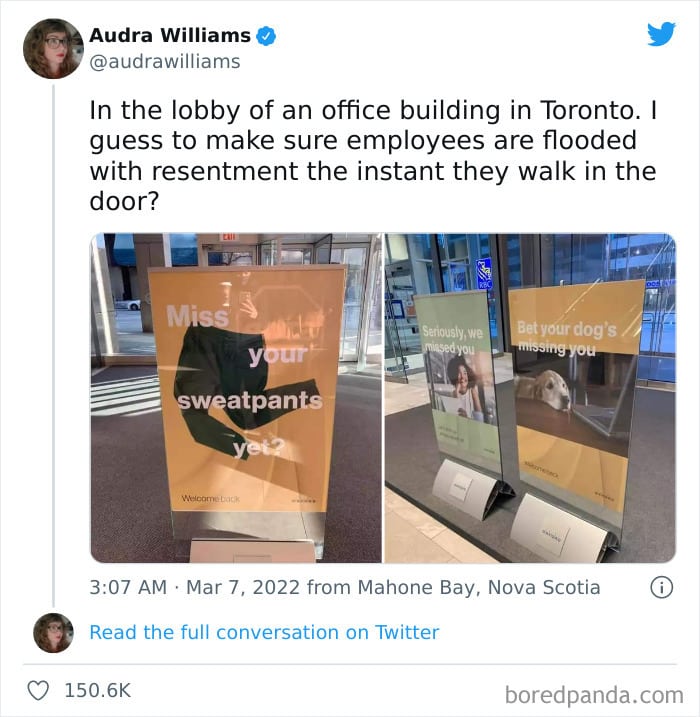
Companies might consider, he added, either transitioning to be remote or in-office full-time to avoid such spots. “Moving toward a hybrid workforce is pretty complicated to figure out, and nobody knows quite how well it works for an organization because it’s still so new for most employers.”
As we can see, people working from home have said it’s helped them maintain a better work-life balance, manage childcare responsibilities and be more productive, among other benefits, but sadly, such praises might not be enough to prevent companies from pushing a return to the office.
#29
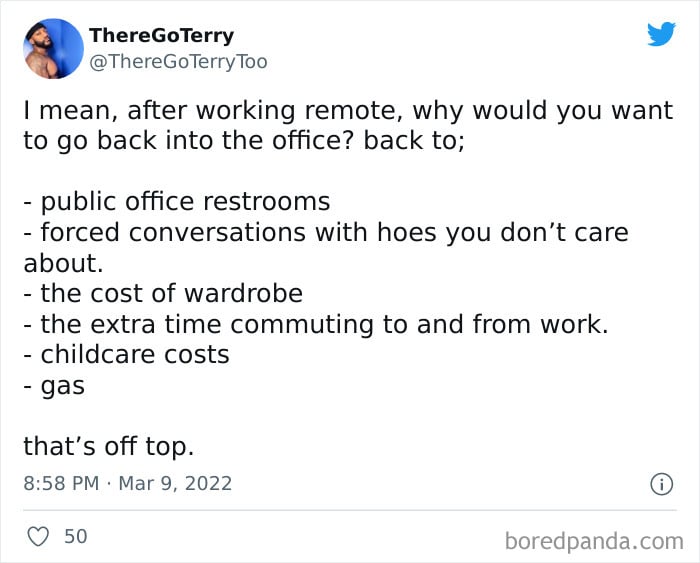
#30
